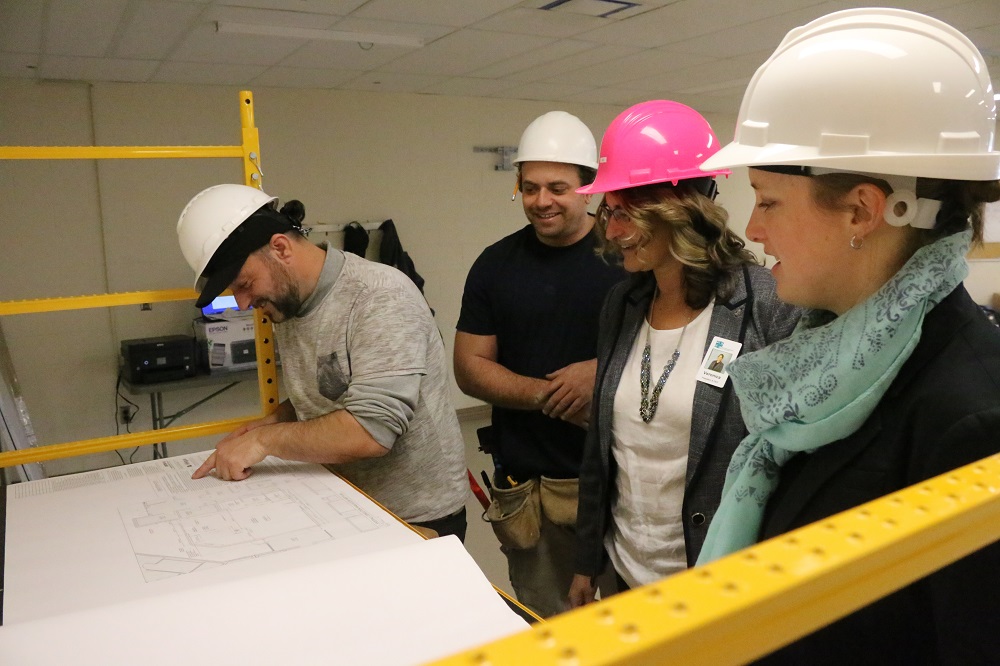Construction to accommodate a new CT scanner and mammography unit at the Haliburton hospital got underway March 4, with health officials calling the addition “the most significant enhancement” in the facility’s 23-year history.
Haliburton Highlands Health Services (HHHS) president and CEO, Veronica Nelson, said Monday was an exciting day for all County residents.
“I’ve said it before, but this is a gamechanger for our community. It’s going to dramatically change how healthcare is delivered here… now people don’t have to worry about being carted away, they will have access to services they need much closer to home,” Nelson said.
A CT scan combines a series of X-ray images taken from different angles around the body and uses computer processing to create cross-sectional images of the bones, blood vessels and soft tissue.
It has become the standard of care for the diagnosis of many life-threatening conditions, such as stroke, internal trauma, and blood clots, said Jennifer Burns West, chief nursing executive at HHHS. The machine is used to visualize nearly all parts of the body and help doctors diagnose disease or injury, to develop a treatment plan.
Units expected in summer
Most new physicians depend on CT units, with Burns West likening the device to a modern-day stethoscope.
“CT has quickly become the new standard of care – allowing physicians to leverage the full breadth of their toolkit,” she said.
The mammography unit will be used primarily for the early detection of cancer and other breast diseases.
Nelson said Orillia-based contractor Quinan Construction is running the build, which will take several months. An equipment contract for a Siemens Healthineers SOMATOM go.Top CT scanner has been submitted, with an application for the mammography unit being prepared for early spring.
She said things remain on track for a summer unveiling. HHHS will be hiring between two and four X-ray technicians to operate the units, and an administrative support. Nelson said she had several leads and expected to have the new staff in place by opening.
Once operational, the units will be available for booked appointments during regular work hours Monday to Friday, and 24/7 for emergencies. Nelson did warn there may be times when patients have to be transferred to another facility if they require diagnosis for severe, complicated illnesses and biopsies.
The project, which Nelson estimated last year would cost between $3 million and $3.5 million – and the hospital’s foundation has committed to fundraising up to $4.3 million for – will “completely transform” the hospital footprint, the CEO says. The space is approximately 1,000 sq. ft. and will accommodate six to eight clients at a time.
There will be a waiting area, changeroom and two washrooms. The CT suite includes scan and control rooms, ultrasound room and storage area. The mammography space is around 160 sq. ft., including a changeroom and can accommodate one client.
Nelson said it was likely the biggest change the hospital has seen since its opening in 2001.
“This is going to change our history. It’s precedent setting… Haliburton County was the only county in Ontario without a CT scanner – no more,” Nelson said. “People will be able to access these services without having to drive an hour or two to another facility… this is delivering on our commitment to ensure people can access as many services as possible close to home.”





